Recent stadium design clearly expresses the trend towards the landmark – the more iconic design is, the better. The controversial Qatar 2022 FIFA World Cup with its venues that are almost entirely new builds is a great example of both local and internationally acknowledged architects trying to create something that is ‘more than just a stadium’ but also a monument to the local culture.
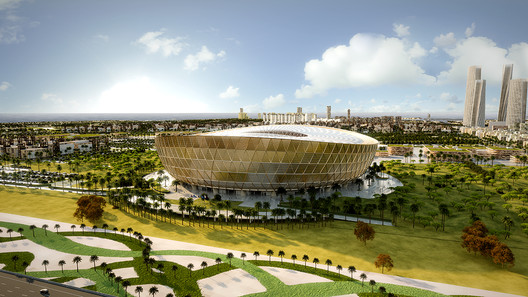

Lusail Iconic Stadium by Foster + Partners (also header image)
The Lusail Iconic Stadium, the venue to host the opening ceremony and the final game is designed by Foster + Partners. Conceived as a ‘golden vessel’, the 80,000 seat arena is inspired by the interplay of light and shadow of the fanar lantern, thus paying homage to the country’s tradition of craftsmanship. Its shape echoes the intricate decorative motifs on bowls and other vessels found across the Arab world as well as the vernacular architecture of the region of Doha.
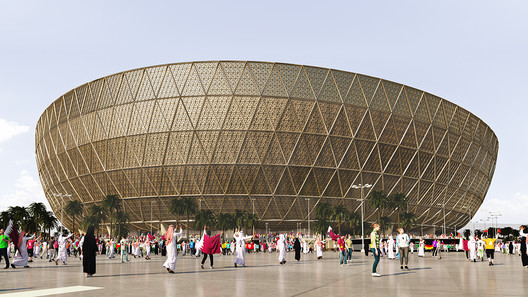
Lusail Iconic Stadium by Foster + Partners
Reflecting Doha’s culture and heritage, the Lusial Iconic stadium is designed to be highly energy efficient and capable of performing in extreme summer climatic conditions. As a part of its progressive environmental strategy, service areas are shaded by canopies of solar collectors, which will produce energy for the stadium when it is in use, as well as generate power for neighbouring buildings.
Situated in the heart of the city of the future, after the tournament the stadium will be transformed into a community space, including schools, shops, cafés, sports facilities, and health clinics.
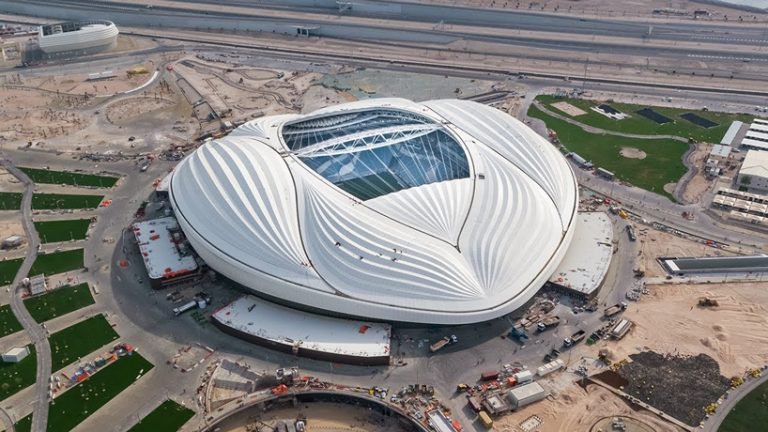
Al Janoub Stadium by Zaha Hadid Architects
Al Janoub stadium designed by late Zaha Hadid also references the traditions of the region it is situated in. One of Qatar’s oldest continuously inhabited areas, Al Wakrah is known as a centre for pearl diving and fishing. The graceful lines and flowing curves of the sails of traditional dhow boats used in these trades inspired the bold and futuristic shape of this 40,000 seat venue. Instead of literally copying the boat, the team chose to create a shape that has multiple interpretations.
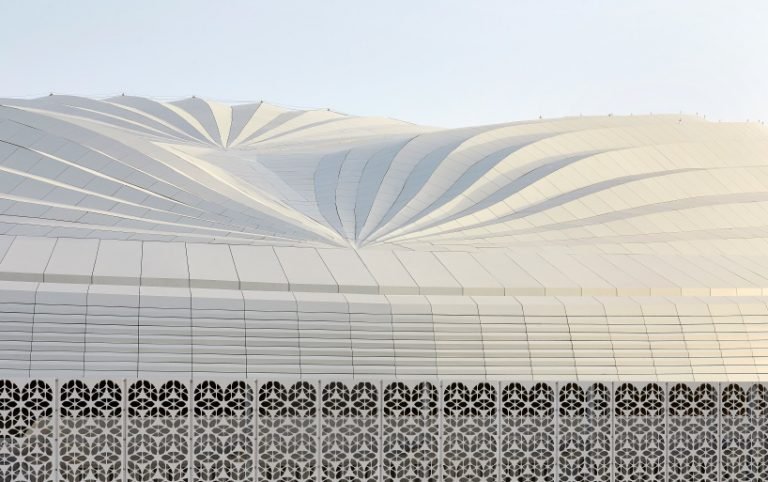
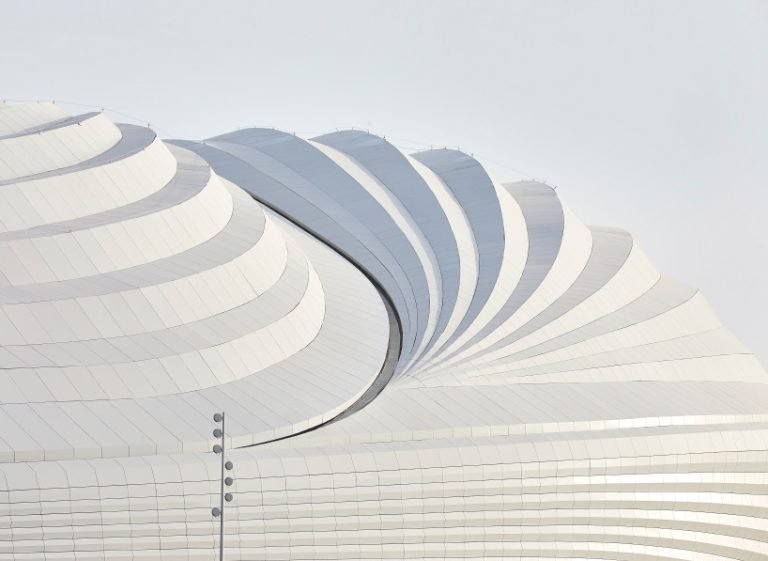
Al Janoub Stadium by Zaha Hadid Architects; ph: Hufton+Crow
The stadium features a fully retractable roof that allows for it to be used year-round. Technology that is capable of cooling the spectator areas to optimum temperatures, with aerodynamics and optimal shading from the roof incorporating a minimal amount of glass make a significant contribution to temperature control.
After the World Cup, the arena will be the home of the local team, so its capacity will be reduced to 20,000 thanks to its modular construction, with the excess seats being donated to sporting projects in developing countries.
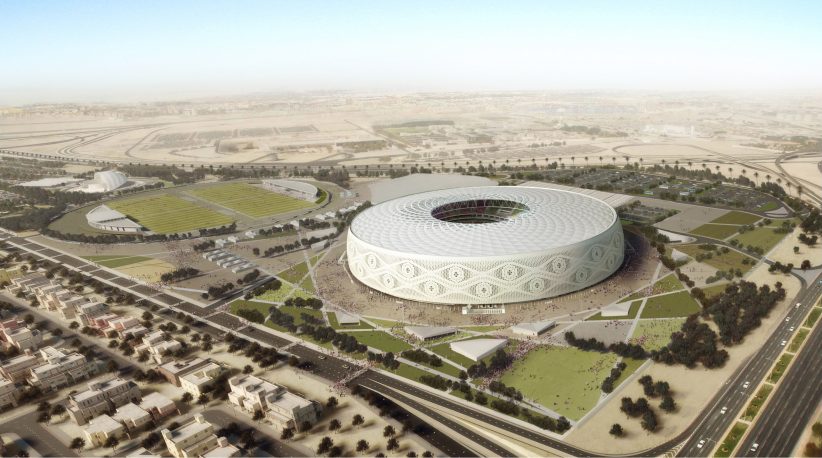
Al Thumama Stadium by Ibrahim M Jaidah
Qatari architect Ibrahim M Jaidah designed the Al Thumama Stadium based on the shape if the gahfiya – a tightly fitted woven cap worn by Arab men as part of their traditional dress and a symbol of dignity and independence. Paying tribute to this traditional clothing, the circular stadium will be punctured with diamond-shaped perforations that form larger rhombic shapes with rounded forms set in between.
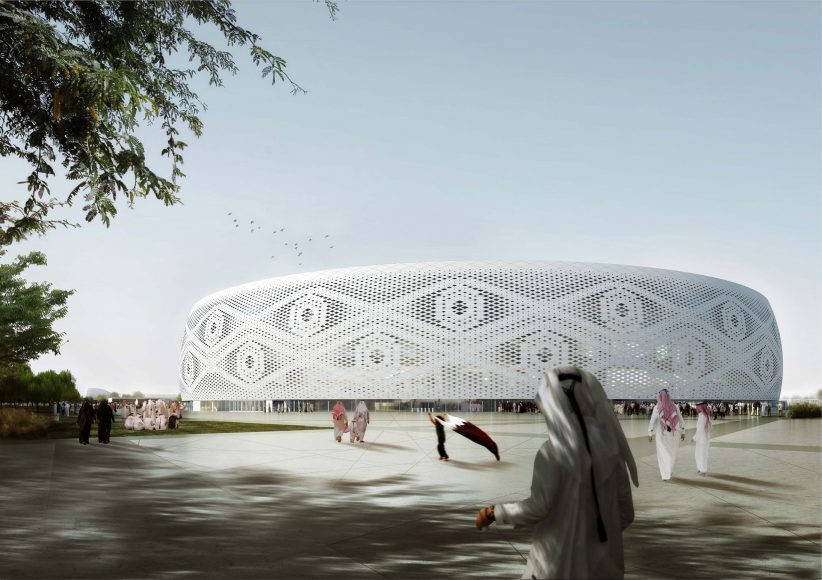
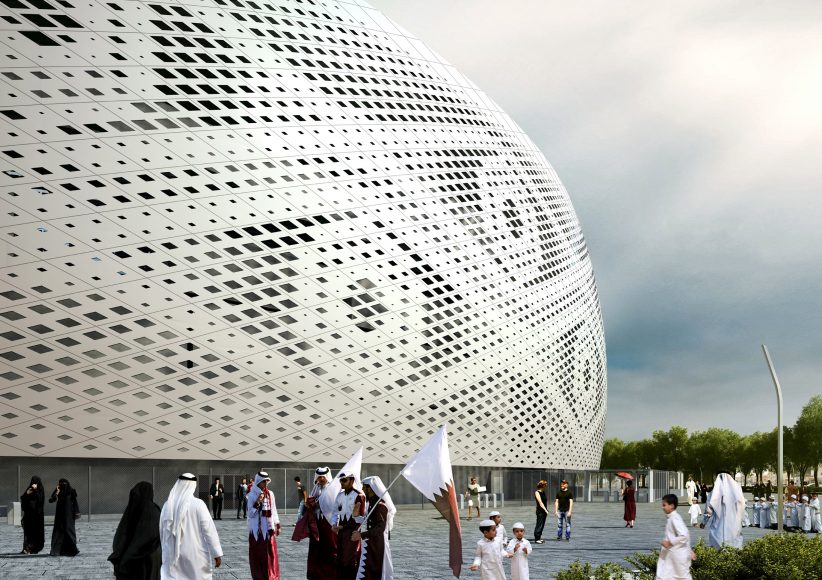
Al Thumama Stadium by Ibrahim M Jaidah
Just as the gahfiya binds Arab nations together through shared tradition, this spirit of a common regional heritage flows through this magnificent stadium, with its glorious circular design and ultramodern roof.
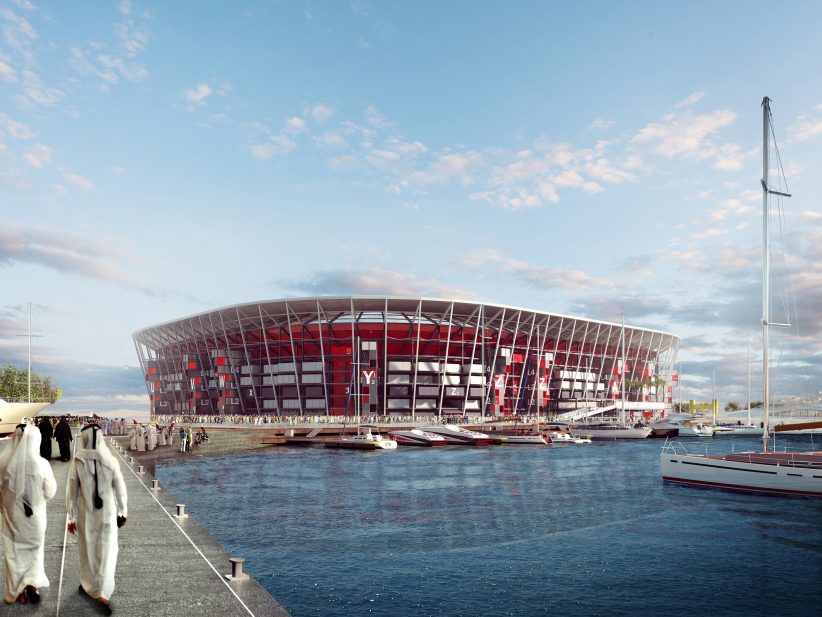
Ras Abu Aboud Stadium by Fenwick Iribarren Architects
Spanish architecture practice Fenwick Iribarren Architects together with Schlaich Bergermann Partner and Hilson Moran developed Ras Abu Aboud Stadium, the first-ever demountable, transportable and reusable stadium in the world. The modular structure based on shipping containers means the 40,000 seat venue can be easily assembled as well as disassembled and moved to a new location after the tournament. Steel containers modified to house removable seats, concession stands and bathrooms will be used as building blocks and arranged in an elegant curved square.
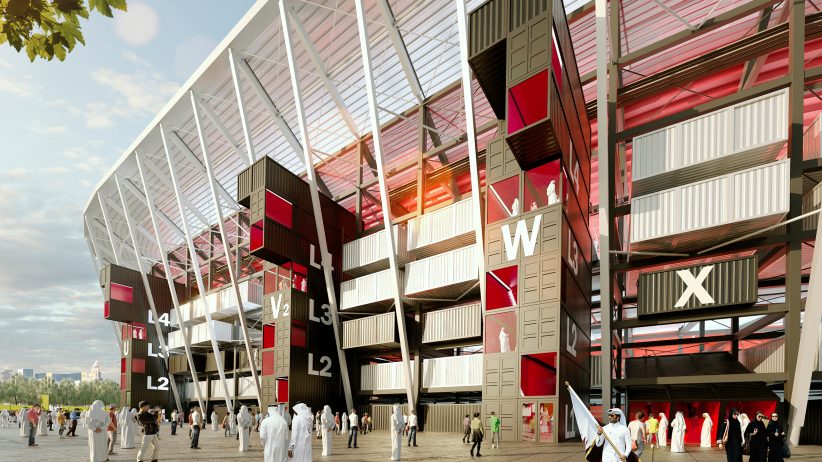
Ras Abu Aboud Stadium by Fenwick Iribarren Architects
According to the team’s concept, the stadium can either host future games in the next world cup or be repurposed into several smaller sport or cultural venues, making it more sustainable and financially viable for other countries that need sport infrastructure.
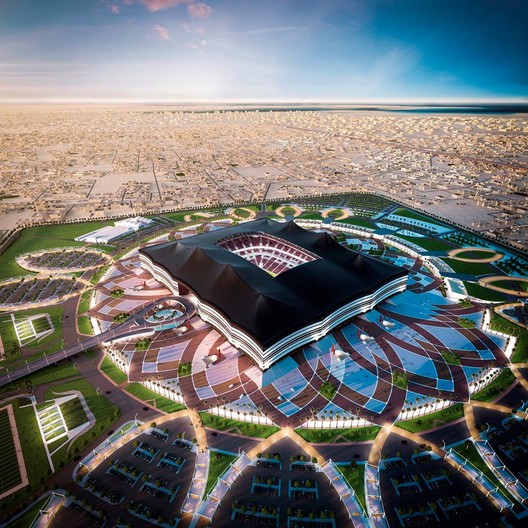
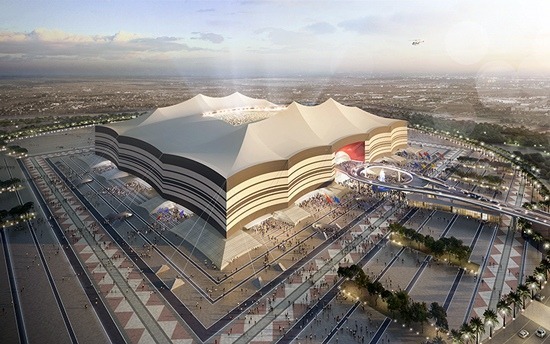
Al Bayt stadium
The 60,000 capacity Al Bayt stadium is also designed to be partially given to developing nations after the tournament. This uniquely Qatari venue takes its name from bayt al sha’ar, tents historically used by nomadic peoples in Qatar and the Gulf region. As it follows from its name, a giant tent structure will cover the whole stadium, and like a true nomad’s tent, it will be portable – the upper tier of the modular design seating will be removed, reducing the stadium to 32,000 seats, and donated to other countries in order to ‘leave a legacy for international football development’ as a lasting reminder of Qatar’s generous spirit.
All images are courtesy of Qatar 2022 Supreme Committee for Delivery & Legacy unless stated otherwise